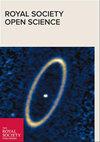热适应对爪蟾糜烂病感染强度和传播潜力的动态影响
IF 2.9
3区 综合性期刊
Q1 MULTIDISCIPLINARY SCIENCES
引用次数: 0
摘要
两栖动物大流行病原体蝙蝠疫霉菌(Batrachochytrium dendrobatidis,Bd)可在温度变化时造成更严重的感染,原因是温度变化后宿主热适应的延迟。然而,人们对这些适应效应的时间及其对 Bd 传播的影响知之甚少。我们测量了热适应如何影响非洲爪蟾的Bd感染,采用了暴露时机处理方法来研究温度变化后适应效应的持续性。与宿主适应延迟相一致的是,在温度降低后(第0天)立即暴露于Bd的温适应蛙比已经适应低温的蛙感染强度更高。这种适应效应持续时间之长令人惊讶(5 周)。当温度变化一周后才接触 Bd 时,适应性并不影响感染强度,这表明青蛙在 7 天内就完全适应了新的温度。这表明,暴露后一周后的适应效应持续存在是由于最初的高感染负荷所造成的,而不是宿主适应的延迟。在第二个实验中,我们重复了热适应对 Bd 感染的持续影响,但发现热适应对孢子的产生没有影响。这表明多变的温度会持续加剧个体的 Bd 感染,但不一定会增加 Bd 的传播。本文章由计算机程序翻译,如有差异,请以英文原文为准。
Dynamic effects of thermal acclimation on chytridiomycosis infection intensity and transmission potential in Xenopus laevis.
The pandemic amphibian pathogen Batrachochytrium dendrobatidis (Bd) can cause more severe infections with variable temperatures owing to delays in host thermal acclimation following temperature shifts. However, little is known about the timing of these acclimation effects or their consequences for Bd transmission. We measured how thermal acclimation affects Bd infection in Xenopus laevis, using a timing-of-exposure treatment to investigate acclimation effect persistence following a temperature shift. Consistent with a delay in host acclimation, warm-acclimated frogs exposed to Bd immediately following a temperature decrease (day 0) developed higher infection intensities than frogs already acclimated to the cool temperature. This acclimation effect was surprisingly persistent (five weeks). Acclimation did not affect infection intensity when Bd exposure occurred one week after the temperature shift, indicating that frogs fully acclimated to new temperatures within 7 days. This suggests that acclimation effect persistence beyond one week post-exposure was caused by carry-over from initially high infection loads, rather than an extended delay in host acclimation. In a second experiment, we replicated the persistent thermal acclimation effects on Bd infection but found no acclimation effects on zoospore production. This suggests that variable temperatures consistently exacerbate individual Bd infection but may not necessarily increase Bd transmission.
求助全文
通过发布文献求助,成功后即可免费获取论文全文。
去求助
来源期刊

Royal Society Open Science
Multidisciplinary-Multidisciplinary
CiteScore
6.00
自引率
0.00%
发文量
508
审稿时长
14 weeks
期刊介绍:
Royal Society Open Science is a new open journal publishing high-quality original research across the entire range of science on the basis of objective peer-review.
The journal covers the entire range of science and mathematics and will allow the Society to publish all the high-quality work it receives without the usual restrictions on scope, length or impact.
 求助内容:
求助内容: 应助结果提醒方式:
应助结果提醒方式:


